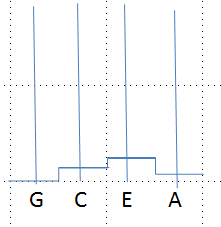Jim Hanks
Well-known member
I can't photograph this well, but does this look like a properly compensated saddle to you for standard reentrant tuning?

This is somewhat exaggerated but hopefully gives the gist. The E string is closer to the nut than the C string and the A is closer than the G.
I do know that the previous owner of this uke was left-handed and I'm thinking the saddle might have been flipped. What do you think?

This is somewhat exaggerated but hopefully gives the gist. The E string is closer to the nut than the C string and the A is closer than the G.
I do know that the previous owner of this uke was left-handed and I'm thinking the saddle might have been flipped. What do you think?
